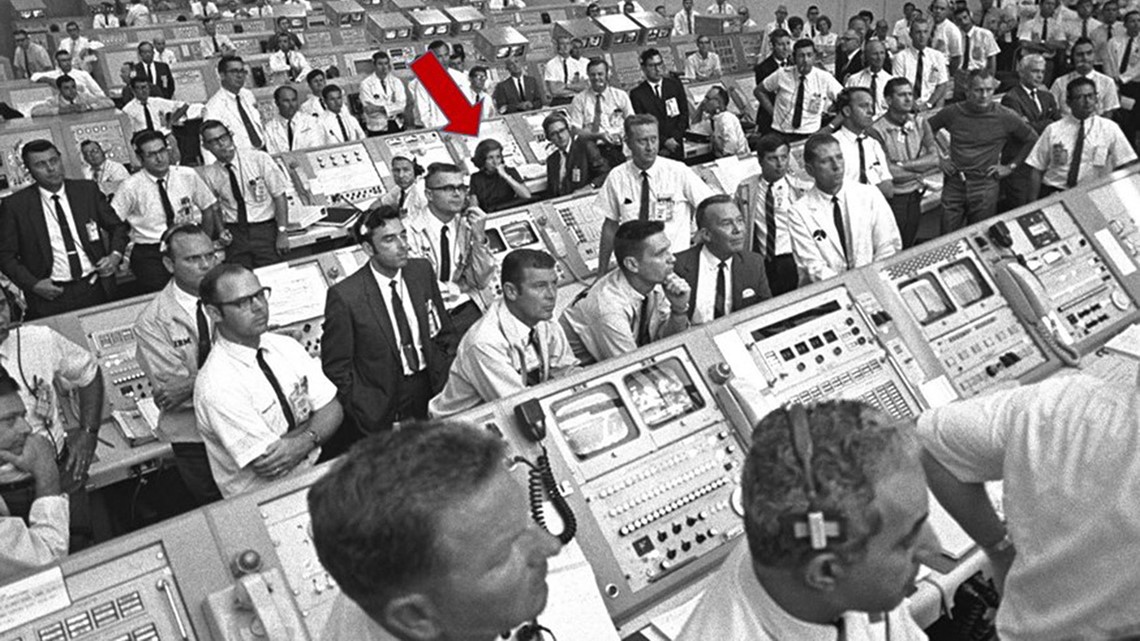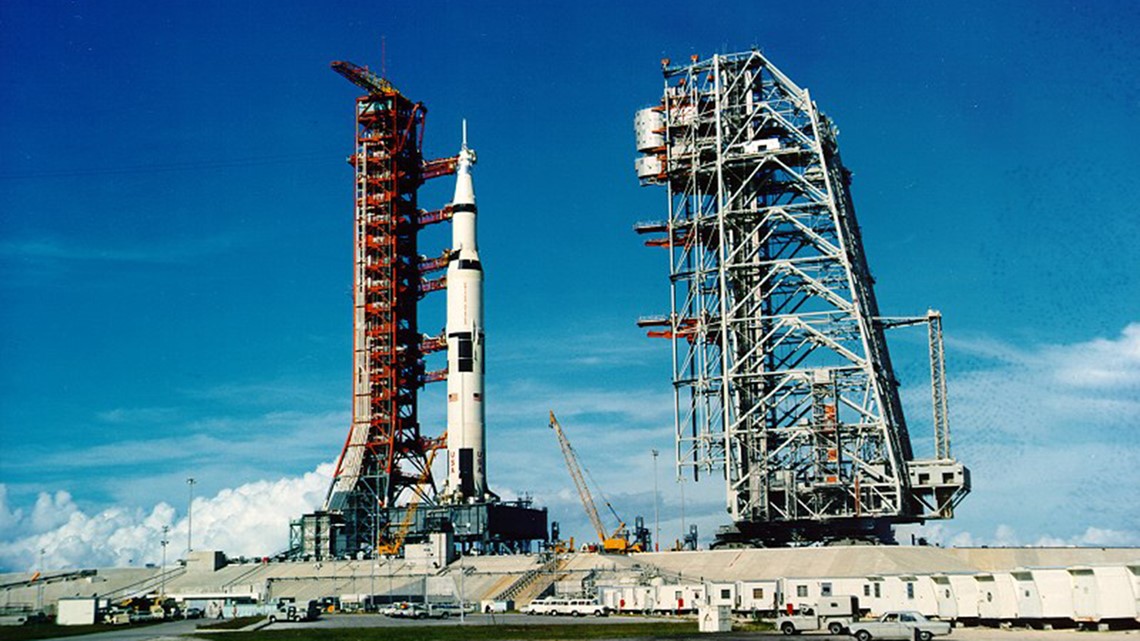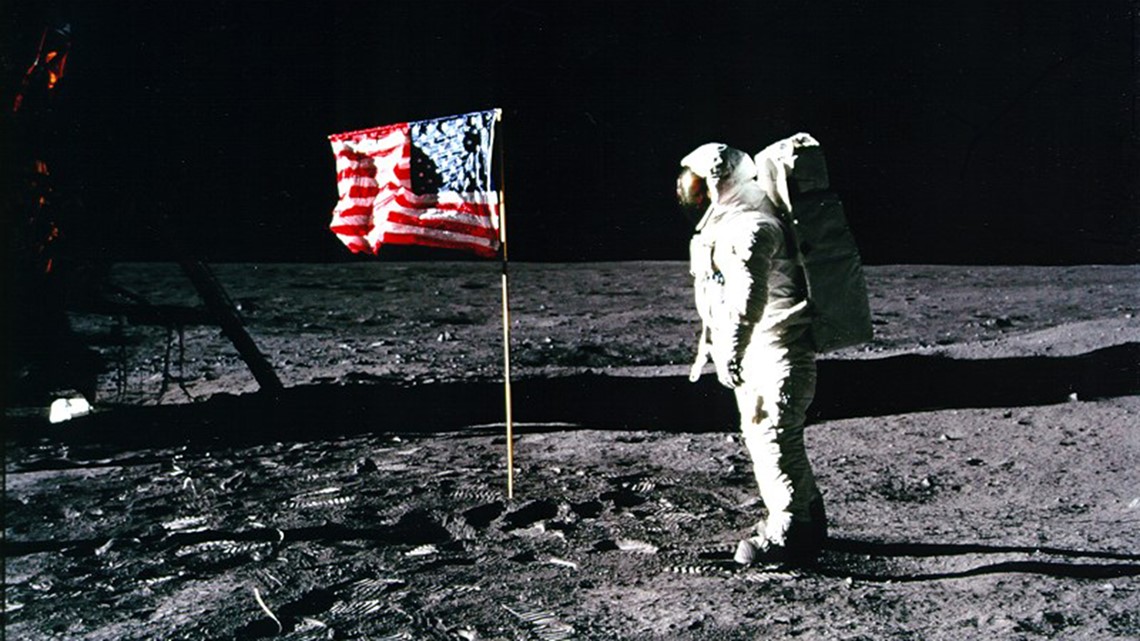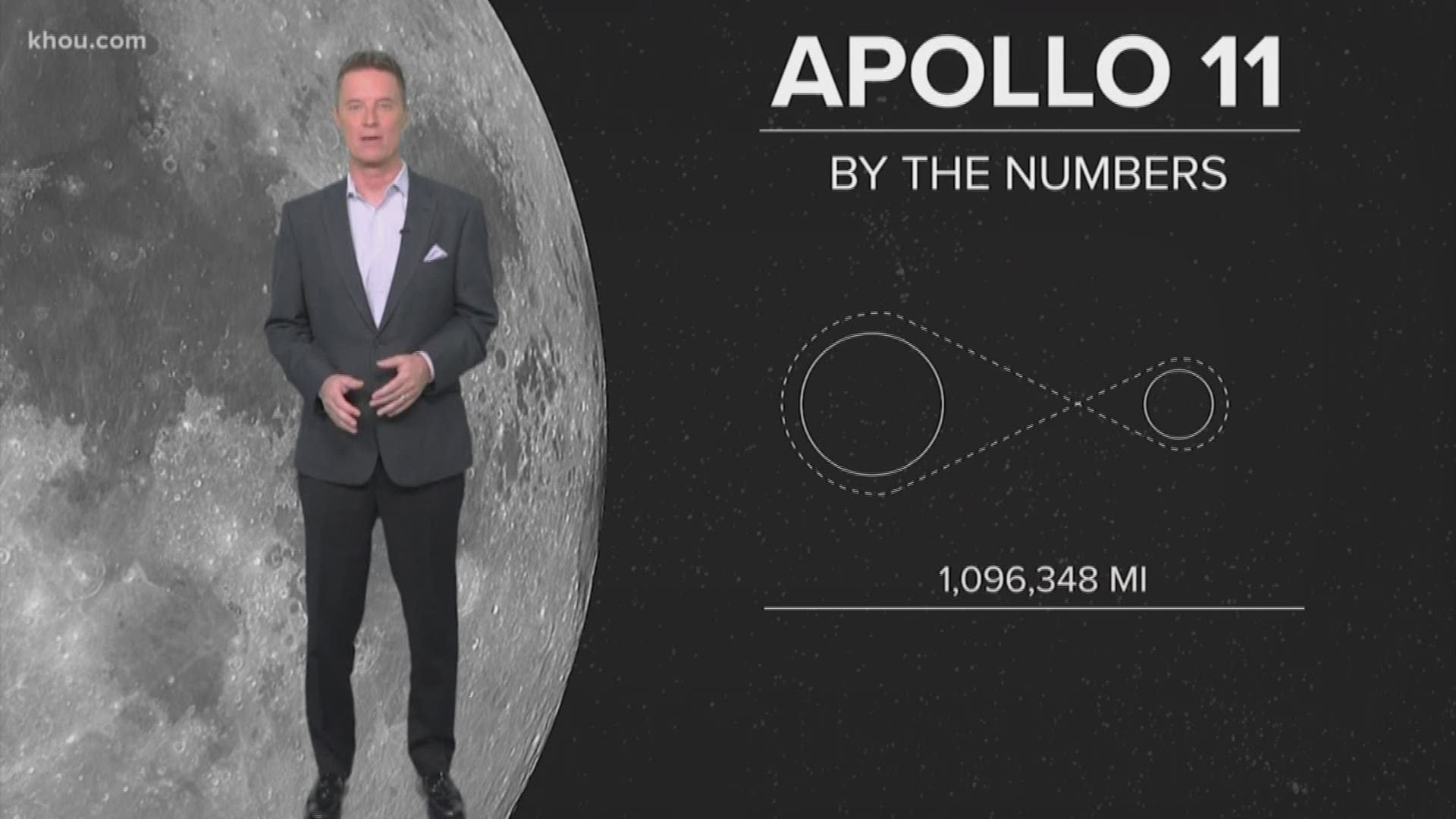Eleven is the number people remember most about the first time a human being set foot on the moon. It was aboard Apollo 11 that Neil Armstrong, Buzz Aldrin and Michael Collins would travel to Earth's celestial sidekick. Armstrong and Aldrin became the first to land there on July 20, 1969.
But there are a lot of numbers -- some obscure -- that you may not know about the Apollo mission or about the people and equipment that got the astronauts there.
For the 50th anniversary of the Apollo 11 landing, here are 11 interesting numbers about the historic mission.
2,978
President John F. Kennedy, before a joint session of Congress, made the following declaration on May 25, 1961.
"I believe that this nation should commit itself to achieving the goal, before this decade is out, of landing a man on the moon and returning him safely to the Earth."
It would be 2,978 days later when Kennedy's goal would be accomplished.
400,000
An estimated 400,000 men and women were involved in getting a man to the moon at one point or another, and at every level of professions. We know about the astronauts and mission controllers. But there were doctors and nurses who watched over the astronauts. There were scientists and mathematicians who had to do all the calculations, and engineers and programmers who helped build the machines that made Apollo a possibility.
1
The movie "Hidden Figures" helped shine a light on all the women who were unsung heroes in getting men to the moon.
There was just one woman who was trusted to be in the locked launch control center at Cape Canaveral when Apollo 11 lifted off. JoAnn Morgan, 28, was a senior instrumentation controller. In an interview with Vanity Fair, Morgan said her job duties included watching over guidance computers, lightning- and fire-detection systems at the launchpad, and watching for ships or submarines trying to access the frequency NASA was using to send commands to the Saturn V rocket.
Morgan said she had to deal with varying levels of sexism, from not having access to a women's restroom, to having her abilities doubted, to having men comment on her looks.


363 and 6.2 million
The Saturn V rocket that carried Apollo 11 off the Earth's surface was 363-feet tall -- enormous to look at, but not even half as tall as the 100-tallest skyscrapers in the world today. Fully fueled, it weighed 6.2 million pounds.


30
When Eagle -- Apollo 11's lunar module -- landed at the Sea of Tranquility, it had less than 30 seconds of fuel remaining for the descent. Had it run out, the landing would have been aborted and someone else not named Neil Armstrong or Buzz Aldrin likely would have been the first to walk on the moon.
151
Armstrong and Aldrin spent 21 hours, 38 minutes on the moon. But a fraction of that -- 151 minutes -- was spent walking around the surface.
They were supposed to take a nap between landing and their moonwalk, but the timetable was moved up as everyone was anxious for the historic moment. Plus, the lunar module was built for landing on the moon and not for comfortably sleeping two full-grown men in bulky spacesuits.


73
In addition to the lunar descent module, American flag, and a plaque, Apollo 11 left behind a 1 1/2-inch silicon disk that included miniaturized goodwill messages from 73 countries.
48 and 21
The astronauts returned about 48 pounds of moon rocks from the lunar surface. But scientists were worried about what else the astronauts might have brought back that they couldn't see -- mainly micro-organisms, bacteria, or other things that could pose a danger on Earth. So, Armstrong, Aldrin and Collins had to spend 21 days in quarantine just to be sure they were safe.


1,096,348
Apollo 11 traveled 1,096,348 miles from liftoff to landing. That's 224 round trips between New York and Los Angeles.



